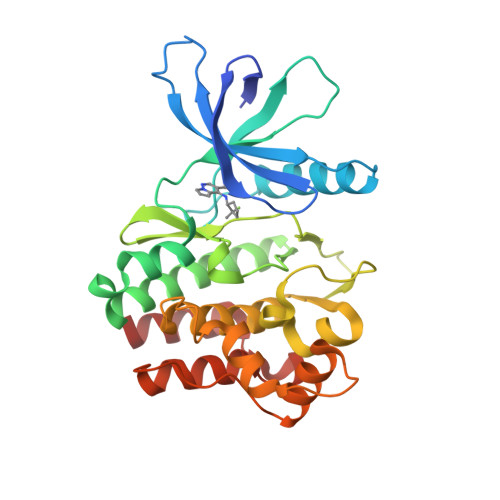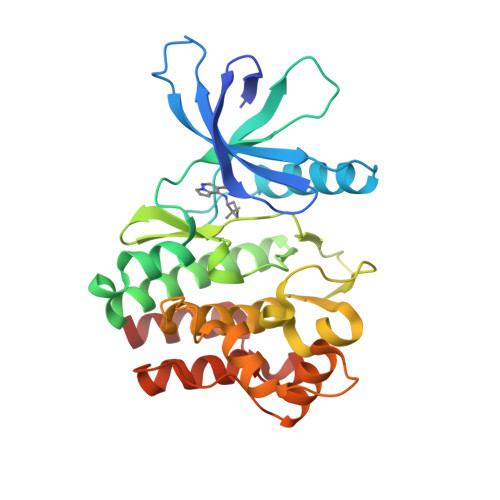Discovery of pyrrolo[1,2-b]pyridazine-3-carboxamides as Janus kinase (JAK) inhibitors.
Duan, J.J., Lu, Z., Jiang, B., Yang, B.V., Doweyko, L.M., Nirschl, D.S., Haque, L.E., Lin, S., Brown, G., Hynes, J., Tokarski, J.S., Sack, J.S., Khan, J., Lippy, J.S., Zhang, R.F., Pitt, S., Shen, G., Pitts, W.J., Carter, P.H., Barrish, J.C., Nadler, S.G., Salter-Cid, L.M., McKinnon, M., Fura, A., Schieven, G.L., Wrobleski, S.T.(2014) Bioorg Med Chem Lett 24: 5721-5726
- PubMed: 25453808
- DOI: https://doi.org/10.1016/j.bmcl.2014.10.061
- Primary Citation of Related Structures:
4RIO - PubMed Abstract:
A new class of Janus kinase (JAK) inhibitors was discovered using a rationally designed pyrrolo[1,2-b]pyridazine-3-carboxamide scaffold. Preliminary studies identified (R)-(2,2-dimethylcyclopentyl)amine as a preferred C4 substituent on the pyrrolopyridazine core (3b). Incorporation of amino group to 3-position of the cyclopentane ring resulted in a series of JAK3 inhibitors (4g-4j) that potently inhibited IFNγ production in an IL2-induced whole blood assay and displayed high functional selectivity for JAK3-JAK1 pathway relative to JAK2. Further modifications led to the discovery of an orally bioavailable (2-fluoro-2-methylcyclopentyl)amino analogue 5g which is a nanomolar inhibitor of both JAK3 and TYK2, functionally selective for the JAK3-JAK1 pathway versus JAK2, and active in a human whole blood assay.
Organizational Affiliation:
Research and Development, Bristol-Myers Squibb Company, Princeton, NJ 08543-4000, USA. Electronic address: james.duan@bms.com.

















